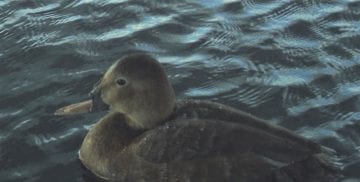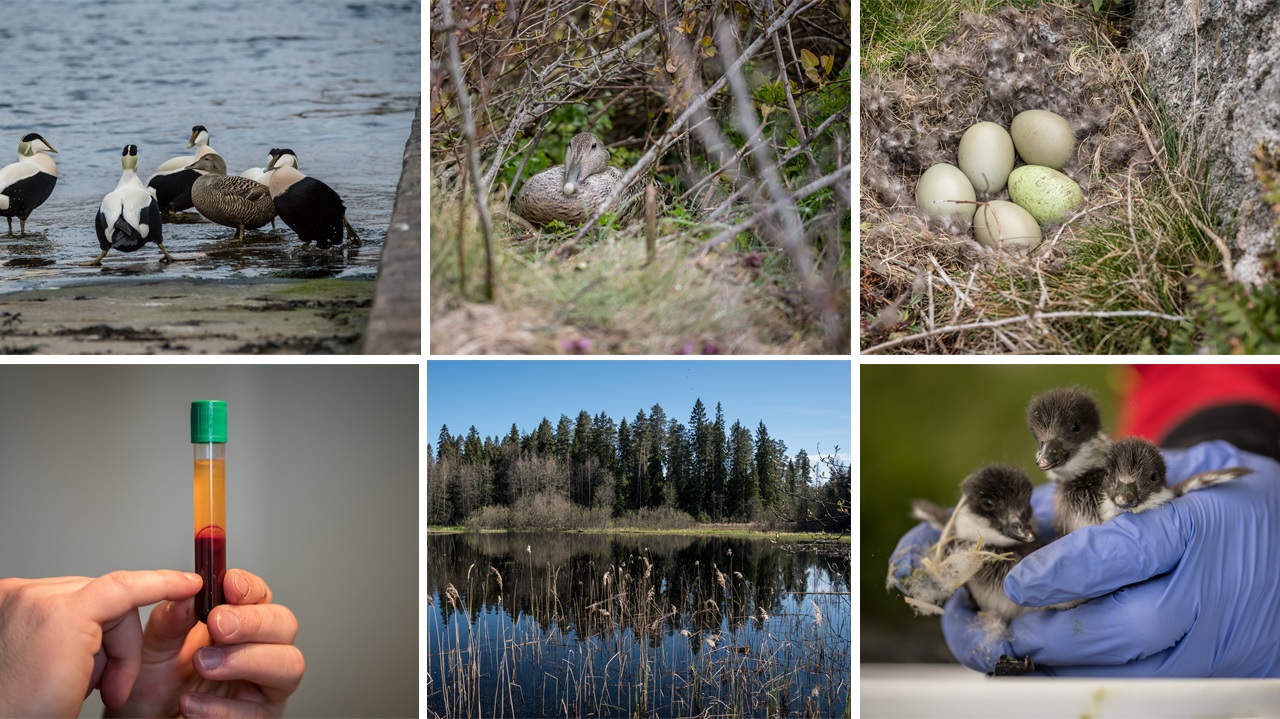DISRUPT: Ducks as models for assessIng endocrine DISRUPTing chemicals in the aquatic environment

Disrupt is 5-year project (2020-2025) funded by the Academy of Finland.
Migratory waterbird populations have dramatically declined worldwide.
In parallel, the proportion of females has considerably decreased in these populations.
Increasing predation of incubating females has been put forward to explain such declines. However, the range of species affected by sex ratio bias towards males and the spatial scale of the processes suggest that other factors are involved.
The increase of pollutants in the environment may contribute to these declines via a reduction of fertility, or an alteration of the immune response, especially of females. In birds, egg production and viability, as well as sex differentiation and the immune response involve hormonal mechanisms that can be altered by pollutants. Among them, endocrine disrupting chemicals (or EDCs) are of particular concern.
We are studying EDCs exposure and their biological effects in waterbirds, with special focus on: the common Eider Somateria mollissima and the Common Goldeneye Bucephala clangula.
What do we do in the field? Have a look at the video by Prescillia Lemesle ❤️🦆
Would you like to join the DISRUPT team to work on endocrine disrupting chemicals in waterbirds?
Looking for a post doc opportunity?
Looking for a Master thesis topic, an internship?
Don’t hesitate contacting me for more information.
Interested in #ornithology & #toxicology?
Then #EOU2023 has a symposium for you:
“Tools to monitor birds' contamination and exposure effects” w/ @CelineArzel @ClaireBottini et al.
Submit your abstract before 15 Jan 2023.https://t.co/Vy8G6dZjN0
— EOU 🐦 (@EOUnion) November 15, 2022
Research on Common Goldeneye : we are working with bird ringers all over Finland!
More information in Finnish here: https://www.luomus.fi/sites/default/files/files/viesti_telkkarengastajille.pdf

MALE-LOOKING FEMALE DUCK? BROKEN BILLS?
As part of the DISRUPT project, I am gathering sightings of female waterbirds with male plumage, but also broken bills. Contact me if you made such observation, please provide the location, date, and if possible a picture of the bird.
